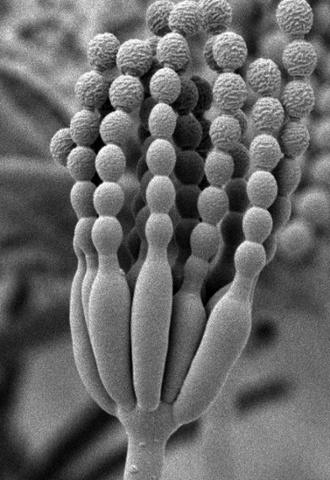Another thing I like about these lists is that they provide ample material for an interesting, informative wiki spree - I believe everyone who's landed on this page for some reason and has kept reading past the first sentence knows what I'm talking about, the frantic clicking and reading that consumes the time planned for productive activities but also makes you a richer person. However, sometimes you actually want to do it, you open an article of interest and follow the links but somehow it doesn't take you anywhere exciting; you might be even tempted to think that you've already read all the cool stuff on wikipedia - there is simply nothing to grab your imagination. Not about time they release the top 10 new species list though - it's guaranteed to deliver an inspirational reading... and sometimes, to prove that the Flying Spaghetti Monster must have been smoking something.
This year's list, for example, contains a microbe that apparently grows mostly in space labs, a 5cm long single-celled organism and a land speed record holder - a snail that only moves a few millimeters per week (this must have been a very patient researcher).
And also this thing, which was named after the crown prince of Netherlands, for some reason. Not sure if that's honouring or mocking the monarchy
It also opened my mind about fairflies - a family of wasps that rarely exceed a millimeter in size. Gosh, now I can't shake the feeling that these guys are all around us. Maybe I inhaled one just now! They also look pretty eerie, which most things do at this scale, actually:
Fairflies demonstrate nature's miniaturization prowess at its finest - they contain the world's smallest insect and they can fly. It's a pretty interesting little "mechanism" - how does this bugger manage to fly around with these eyelashes for wings?!
Further, I learned what's a parasitoid - it's a parasite that actually kills its host. OMG, so now that's something more terrifying than parasite, I didn't realize that parasitism was the milder form. This includes relationships like zombifying a host and taking control of their motions like a puppet. They also have a terrifying picture for this:
Did you notice it? Yeah, look again - there is this tiny puppet master taking control of its victim. The process is called ovipositing, which is science's euphemism for impregnating a poor bee with your hell-spawn and turning into a zombie. And do you know what the result is called? But of course it's a zombee! I think that's going to be my word of the week. Zombee! Beat that, Hunger Games! I'm pretty sure they don't have zombees in there.
Thanks for sharing this moment of appreciation of nature at it's weirdest with me. Now that I've seeded your reading list (and nightmares) with some materials I guess it's finally time to start doing something productive... or maybe read about how a single-celled organism can be 5cm long, we'll see.





